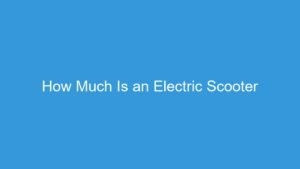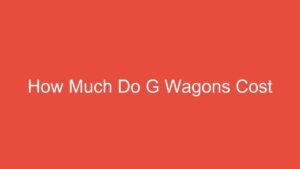
Contents
How Much Is a BMW i8? Your Comprehensive Guide to Owning This Futuristic Hybrid Sports Car
Dreaming of owning a car that looks like it drove straight out of a sci-fi movie? The BMW i8, with its striking design and innovative plug-in hybrid technology, often captures the imagination of car enthusiasts worldwide. But once the initial awe subsides, a practical question emerges: “How much is a BMW i8?”
Navigating the cost of a luxury hybrid sports car can be complex, especially since the i8 is no longer produced new. Don’t worry, we’re here to help! This detailed guide will break down everything you need to know about the price of a BMW i8, how to find one, and what to consider before making this exciting purchase.
The Short Answer: What to Expect When Buying a Used BMW i8
Since BMW ceased production of the i8 in 2020, you’ll be looking exclusively at the used car market. This is great news for buyers, as it means significant depreciation from its original sticker price!
🛒 Recommended Product
While prices can fluctuate based on many factors, you can generally expect a used BMW i8 to range anywhere from roughly $40,000 to $90,000.
- Earlier models (2014-2016) with higher mileage will typically fall on the lower end of this spectrum.
- Later models (2017-2020), especially the Roadster (convertible) variant, with lower mileage and in pristine condition, will command prices closer to the higher end.
Remember, the i8 originally retailed for over $140,000, and the Roadster variant even higher, so buying pre-owned offers a substantial saving!
What Factors Influence the BMW i8’s Price?
The price tag on an i8 isn’t static. Several key elements play a significant role in determining its final value. Understanding these will help you gauge if a deal is fair or if you should keep searching.
-
Model Year:
- Newer models (e.g., 2018, 2019, 2020) will naturally be more expensive than older ones. These later models often boast minor improvements, such as a larger battery pack, leading to a slightly extended electric range and increased horsepower (369 hp vs. 357 hp).
- The 2018 introduction of the i8 Roadster (convertible) also introduced a higher price point for the open-top variant.
-
Mileage:
- This is one of the most significant factors. Lower mileage means a higher price. An i8 with 20,000 miles will be considerably more expensive than one with 60,000 miles, assuming similar condition and year.
-
Condition (Interior, Exterior, Mechanical):
- Pristine condition with no dents, scratches, or interior wear will increase the value.
- A well-maintained engine and hybrid system with a documented service history are crucial and will command a premium. Issues here can be very costly to fix.
-
Trim Level and Optional Features:
- While the i8 didn’t have traditional “trim levels” like some cars, it did offer various interior design worlds (e.g., Giga World, Tera World, Halo World) and optional features like Laserlight headlights (a highly desirable option), specific wheel designs, and enhanced sound systems. These can push the price up.
- The Roadster (convertible) variant is generally more expensive than the Coupe.
-
Location:
- Prices can vary depending on your geographic location. Areas with higher demand for luxury sports cars or specific regional taxes might see slightly different pricing.
-
Seller Type:
- Dealerships (especially BMW dealerships) often offer Certified Pre-Owned (CPO) options, which come with warranties and rigorous inspections, but usually at a higher price.
- Private sellers might offer lower prices, but the purchase comes with potentially higher risk and less recourse if issues arise.
Step-by-Step Guide to Buying a BMW i8
Finding and purchasing your dream i8 doesn’t have to be daunting. Follow these steps for a smooth and informed buying experience:
🛒 Recommended Product
Step 1: Define Your Budget (and Stick to It!)
* Beyond the purchase price, consider insurance, maintenance, and potential future repairs. Get quotes for insurance before you commit. BMW i8 parts and service can be expensive.
* Factor in potential financing costs if you’re not paying cash.
Step 2: Research the Market Thoroughly
* Search online platforms: Websites like AutoTrader, Cars.com, CarGurus, and even eBay Motors are excellent starting points. Don’t forget manufacturer-specific used car sites.
* Check BMW dealerships: They often have the best-maintained used inventory, including CPO options.
* Look at price trends: See what similar models (year, mileage, condition) are selling for to get a realistic expectation.
Step 3: Define Your Priorities
* Coupe or Roadster? Decide if you prefer the fixed-roof or the convertible experience.
* Must-have features? Are Laserlights important to you? Do you prefer a specific interior “World” package?
* Mileage threshold: Are you comfortable with higher mileage for a lower price, or do you prioritize low mileage?
Step 4: Inspect the Car (or Have it Inspected)
* If possible, see the car in person. Check for body damage, interior wear, and tire condition.
* Crucially, arrange for a Pre-Purchase Inspection (PPI) by a qualified, independent mechanic specializing in BMWs or hybrids. This is non-negotiable for a complex car like the i8. They can identify potential mechanical, electrical, or hybrid system issues you might miss.
Step 5: Review Documentation
* Service history: A complete, documented service history is invaluable. It shows the car has been properly maintained.
* Title: Ensure the title is clean and there are no liens on the vehicle.
* CarFax/AutoCheck report: These reports provide valuable information on accident history, ownership, and mileage discrepancies.
Step 6: Take a Thorough Test Drive
* Don’t just drive around the block. Test the car at various speeds, on different road surfaces, and accelerate both gently and firmly.
* Pay attention to any unusual noises, vibrations, or warning lights.
* Test all hybrid modes (electric, hybrid, sport). Ensure the battery charges and discharges correctly.
Step 7: Negotiate the Price
* Armed with your research and PPI report, be prepared to negotiate.
* If the PPI uncovered issues, use them as leverage for a price reduction.
* Don’t be afraid to walk away if the seller isn’t reasonable or if something feels off.
Step 8: Finalize the Purchase
* Once you agree on a price, carefully review all paperwork before signing.
* Understand the warranty (if any, for CPO vehicles) and return policy.
* Arrange payment and title transfer according to your local laws.
Tips for a Smart BMW i8 Purchase
- Prioritize a Pre-Purchase Inspection (PPI): We cannot stress this enough. For a sophisticated hybrid like the i8, a PPI is your best defense against unexpected, costly repairs down the line.
- Check the High-Voltage Battery Health: The health of the main hybrid battery is critical. A good PPI should include a check of its status. Replacement can be extremely expensive.
- Understand Running Costs: The i8 is a premium vehicle. Fuel (premium gas only), insurance, and especially parts and specialized labor for maintenance will be higher than for a conventional car. Budget accordingly.
- Consider Certified Pre-Owned (CPO): If available from a BMW dealership, a CPO i8 often comes with an extended warranty and the peace of mind of a multi-point inspection by factory-trained technicians. This can justify a slightly higher purchase price.
- Don’t Rush the Decision: The i8 is a significant investment. Be patient, do your homework, and wait for the right car at the right price.
Common Mistakes to Avoid When Buying a BMW i8
- Skipping the Pre-Purchase Inspection (PPI): This is the number one mistake buyers make with complex, high-performance vehicles. Don’t risk it!
- Ignoring the Service History: A lack of maintenance records is a huge red flag. It indicates potential neglect and could lead to major mechanical issues you won’t know about until it’s too late.
- Underestimating Maintenance and Running Costs: Don’t just focus on the purchase price. Future maintenance, insurance, and potential repair bills for a hybrid sports car can quickly add up.
- Falling for “Too Good to Be True” Deals: If the price is significantly lower than similar i8s on the market, there’s usually a reason. It could indicate hidden damage, a salvage title, or mechanical problems. Always be skeptical of unusually low prices.
- Not Test Driving Extensively: A quick spin around the block isn’t enough. You need to experience the car in various driving conditions to uncover potential issues.
- Buying Impulsively: The i8 is an emotional car to look at, but buying it should be a rational decision. Do your research and avoid letting emotion dictate your purchase.
Conclusion
The BMW i8 remains an incredible feat of automotive engineering – a truly unique and visually stunning hybrid sports car that turns heads wherever it goes. While it’s no longer produced new, the used market offers an exciting opportunity to own this piece of automotive history at a more accessible price.
🛒 Recommended Product
By understanding the factors that influence its cost, following our step-by-step guide, and being mindful of common pitfalls, you can confidently navigate the buying process. Do your research, prioritize that all-important Pre-Purchase Inspection, and you’ll be well on your way to enjoying the thrill of owning your very own futuristic BMW i8!
FAQ
Q. What was the original MSRP of a new BMW i8?
A. When it was first introduced in 2014, the BMW i8 Coupe had an original Manufacturer’s Suggested Retail Price (MSRP) starting around $136,000 to $137,000. By the end of its production run in 2020, the MSRP for the Coupe model was closer to $147,500, while the i8 Roadster, introduced later, started around $163,300.
Q. What is the current average price for a used BMW i8?
A. As of late 2023/early 2024, the average price for a used BMW i8 typically ranges from approximately $55,000 to $90,000. This wide range depends heavily on the model year, mileage, overall condition, and specific features or packages of the vehicle. Well-maintained examples from later model years with lower mileage will command prices at the higher end of this spectrum.
Q. How does the price of an i8 Coupe compare to an i8 Roadster?
A. The BMW i8 Roadster, which began production for the 2019 model year and continued through 2020, generally commands a higher price on the used market than the Coupe. Buyers can expect to pay anywhere from $10,000 to $25,000 or more extra for a Roadster compared to a similar condition Coupe of the same model year, reflecting its higher original MSRP and greater exclusivity.
Q. What factors most influence the price of a used BMW i8?
A. Several key factors significantly influence a used BMW i8’s price: the model year (newer models are typically more expensive), mileage (lower mileage generally increases value), the vehicle’s overall condition (both aesthetic and mechanical), a complete service history, original options and packages, and whether it is the more sought-after Roadster variant. Regional market demand can also play a role.
Q. Has the BMW i8’s value depreciated significantly since its release?
A. Yes, the BMW i8 has experienced considerable depreciation, particularly in its initial years on the market. Like many high-end luxury and performance vehicles, it lost a substantial portion of its original value. Cars that once cost well over $130,000-$160,000 new can now be found for under $100,000, illustrating a significant drop from their original MSRP.
Q. Are there specific model years that command a higher or lower price for the i8?
A. Generally, later model years (2019 and 2020) command higher prices due to their newer technology, potential for lower mileage, and the inclusion of the Roadster variant in the lineup. Earlier models (2014-2016) typically fall on the lower end of the price spectrum. The 2018 model year is also notable as it received a battery capacity upgrade and a slight power increase, making it more desirable than earlier iterations.
Q. What should I consider beyond the purchase price when buying a BMW i8?
A. Beyond the initial purchase price, prospective buyers should factor in ongoing running costs. These include potentially high insurance premiums, specialized maintenance for its hybrid powertrain and complex systems, the cost of replacing its unique performance tires, and the possibility of battery degradation over time, which could lead to expensive repairs or replacements. A thorough pre-purchase inspection by a BMW specialist familiar with hybrid vehicles is highly recommended.
Related Articles
How Much Is a Corvette
How Much Does a Corvette Cost? Your Ultimate Guide to Unlocking the Dream Ah, the Corvette. Just uttering the name conjures images of sleek lines, exh…
How Much Is a Grand Wagoneer
How Much Is a Grand Wagoneer? Your Complete Guide to Understanding the Price Tag The Grand Wagoneer. Just the name conjures images of luxurious comfor…
How Much Is a Mclaren 720s
How Much Is a McLaren 720S? Your Ultimate Guide to Understanding the Price Tag The McLaren 720S. Just the name conjures images of blistering speed, ae…
Affiliate Disclosure: As an Amazon Associate, I earn from qualifying purchases made through links on this site.















